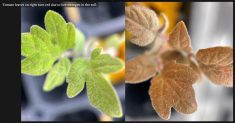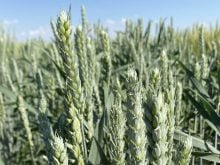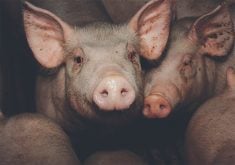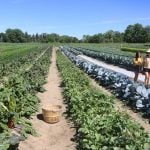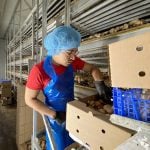A Canadian company may have found the answer to cows that produce a tremendous amount of milk but lose their fertility at an early age.
Don Crober, chief executive officer and chief science officer of Performance Genomics, is developing a test to determine how long a Holstein cow will remain fertile.
He said such a test is needed because North American dairy farmers are replacing Holstein cows at a staggering rate.
“It’s the result of lots of generations of highly effective selection for milk production and frankly, neglect of reproduction,” said Crober, whose Truro, N.S., company specializes in fertility, reproduction and reproductive longevity in agricultural animals.
Read Also

Grain farming’s hard times expected to continue
Rabobank says it will be two more years before North American grain farmers achieve break-even due to “monster” supplies and “sticky” crop input prices.
“It’s caught up with them and they need a solution.”
Crober said the problem is basic: after a couple of lactations it becomes difficult to get high performing Holsteins pregnant again.
“The figure that I hear thrown around is about two and a half lactations,” he said.
“It’s not a case that she’s impossible to rebreed, but on a cost benefit basis, it’s generally not there. Instead of one insemination, you’re looking at two or three.”
Crober’s solution is to change the genetics of the dairy herd, bringing in cows that produce a large volume of milk but remain fertile after several lactations.
Crober and his colleagues at Performance Genomics are working with the University of Chicago to develop a panel, or list of genetic markers, connected to reproductive performance in mice. The idea is that the mouse panel could determine if cows, and most other mammals, are fertile.
Crober has identified 25 Holstein genes that may affect reproductive longevity.
“We know that one gene is not going to be responsible, in any huge way, for how long an animal reproduces,” he said.
“There’s going to be a lot of genes involved and that’s why we want our panel to represent a bunch of the most important ones.”
Performance Genomics will test DNA samples from herds in Quebec and Nova Scotia this summer to determine which genetic markers are the most relevant for reproductive longevity.
The ultimate goal is to develop a test that allows farmers to send in a hair sample from a newborn calf to find out if the animal will remain fertile or not.
“That single test will provide for a rating of how superior the animal is, in terms of its reproductive potential for herd life,” Crober said.
Henry Holtmann, a dairy producer near Winnipeg, isn’t convinced better genetics are the silver bullet to solve the industry’s reproductivity problems.
In his herd of 400 animals, Holtmann typically replaces cows after 1.7 lactations, because of difficulty getting the animals pregnant after a couple of lactation cycles.
He said dairy producers want cows to reach peak milk production at 60 days after calving, followed by a slow decline in production, until the end of the 305-day lactation cycle.
However, they also want animals to become pregnant at 60 days so that they can calve and re-enter the production system with only a short delay between cycles.
Holtmann said the problem is that animals are under stress at 60 days into lactation.
“At that 60 day mark, they’re actually producing (milk) right off their back…. Their dry matter intake has not caught up to their ability to produce (milk),” he said.
“So there’s our challenge. We want the most milk out of them at that point, but we also want to get them pregnant.”
Holtmann wondered if the problem is genetics or management practices.
“Have we selected these cows genetically for fertility to be low? Or is it because of our management style and the environment that we give them?” he said.
“If we expected less out of them, would they all get pregnant?”





